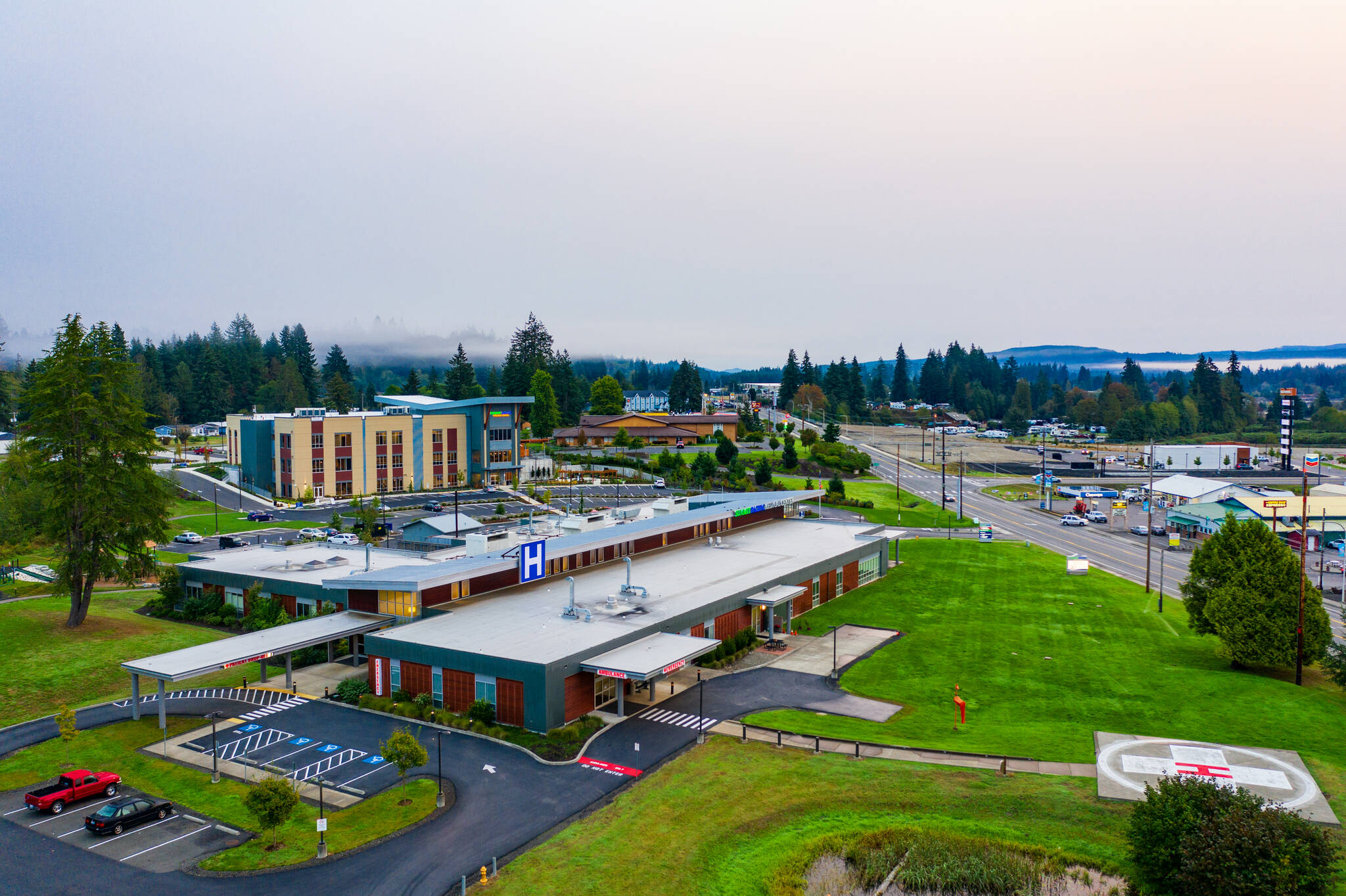Securing the support of East Grays Harbor County taxpayers can be difficult. Just ask the Elma School District, for which a $65 million bond failed two months ago by almost a two-thirds vote.
It’s part of the reason Summit Pacific Medical Center, after announcing a $55 million expansion to its hospital in Elma, hasn’t proposed any burden to taxpayers in Grays Harbor Hospital District 1, and will avoid doing so “at all costs,” according to Summit Pacific CEO Josh Martin.
“What that means is we have to think really creatively,” Martin said.
With the project set to break ground in eight months, the way it will be funded is still a question.
That uncertainty is partially because the hospital’s initial funding avenue, a direct loan from the United States Department of Agriculture, didn’t pan out. USDA provides both direct loans — as well as guaranteed loans through banks — for hospital construction projects in rural areas. According to Martin, the hospital spent six months working with the agency to examine the feasibility of a loan, and eventually submitted an application.
Summit Pacific has already funded two of its projects — the main hospital and wellness center — with USDA loans. The wellness center, which was completed in 2019 to provide increased primary care and capacity, was funded by both direct and guaranteed loans.
The planned expansion will add 29,350 square feet to Summit Pacific’s campus, including a 17,000-square-foot patient unit with 10 new beds, a 6,400 square-foot emergency department addition and a new rooftop heliport to support transfers of patients in critical care. Martin said the expansion will help the hospital deal with the significant increase in patient volume — and more acute illnesses — in the last five years.
“We do not have the capacity to effectively care for our residents,” Martin said.
This time around, when the hospital submitted a direct loan application for the expansion, USDA deemed it ineligible, saying because Summit Pacific’s financials were favorable, it had the ability to explore other funding sources. Hospital financial data from February shows it had 290 days cash on hand.
But that rejection opened another door for the hospital that, according to Martin, could be more timely and cost effective in the long run.
As long as everything goes to plan.
Heeding advice from hospital executives, the hospital district’s Board of Commissioners last week voted at a special meeting to explore tax exempt revenue bonds as a possible option for financing the hospital expansion project. With currently favorable market conditions — including an “appetite” for hospital construction — and relatively low interest rates, the hospital hopes to sell all $55 million in bonds to investors in the next 3 to 4 months, which financial experts say is feasible, according to Martin.
The vote initiated a 30-day credit assessment of Summit Pacific to be prepared by financial planner KeyBank. Based on those results, Summit Pacific will go out for an official bond rating and then take the bond package to market.
If the district is able to sell bonds quickly in the next few months, those interest rates will be locked in as the investment is returned in the coming decades.
Hence the “essence for speed,” Martin said.
“This could change a year from now, and it was very different a year ago,” Martin said to the hospital board. “It’s a rotating door, where at any point in time you’re going to have to make a decision when you are going to go in. You don’t want to get stuck.”
The revenue bond option also allows the hospital to keep cash in its pockets. That’s opposed to a USDA guaranteed, or indirect loan that would require a $6 million project contribution from the hospital. A USDA loan is still on the table should revenue bonds fail, although it would likely be at a higher interest rate and “not as favorable to the district, but it’s still better than going out for tax,” Martin said.
The USDA option would also require navigating the agency’s loan process and could take nine to 12 months, a delay that could add to construction costs because of inflation, Martin said. He emphasized the importance of starting construction on time because of a pressing need for expanded capacity.
“Time is of the essence with stuff like this, which means we cannot afford to fail,” Martin said.
Contact reporter Clayton Franke at 406-552-3917 or clayton.franke@thedailyworld.com.


